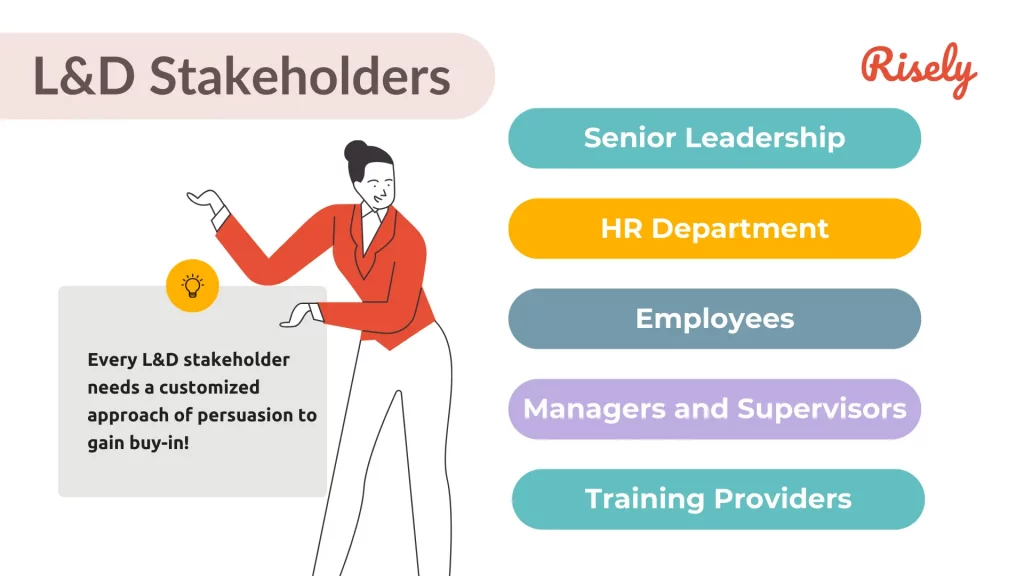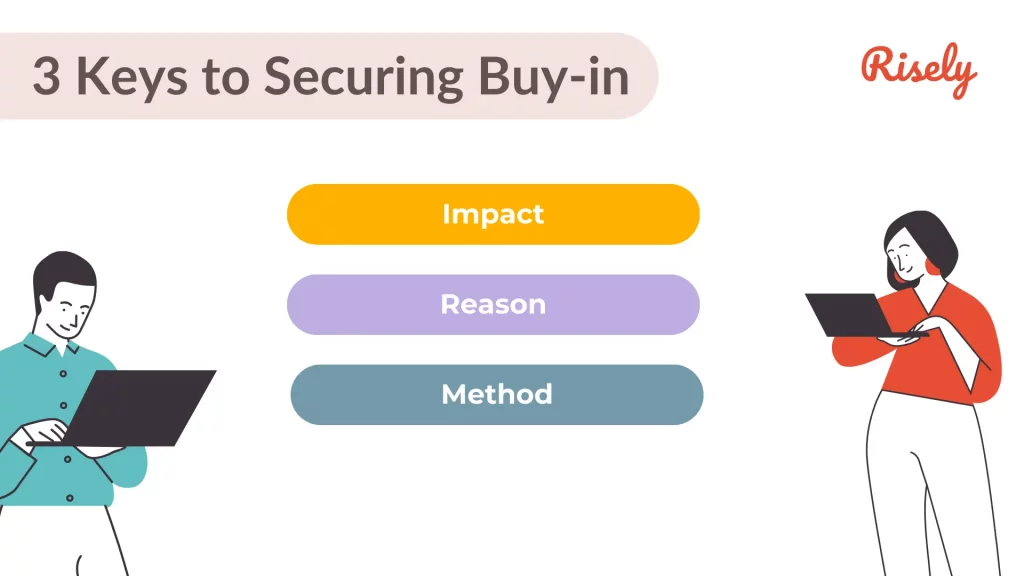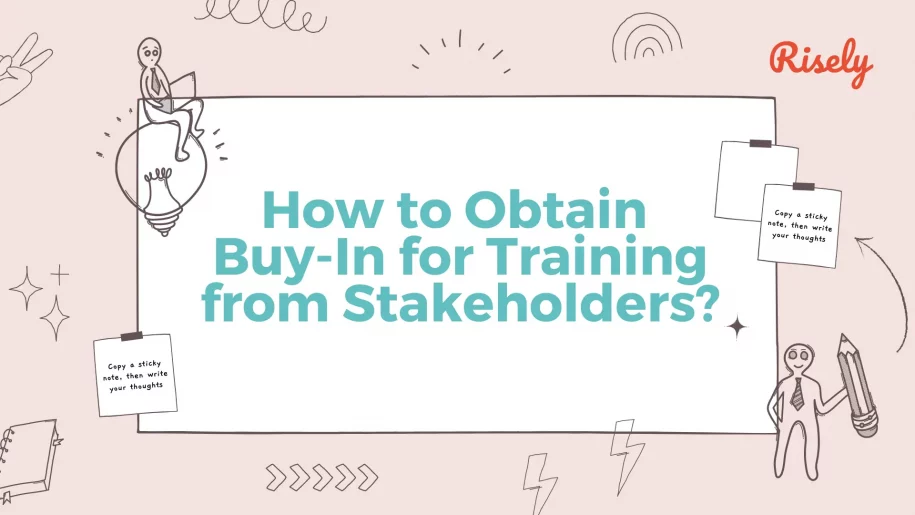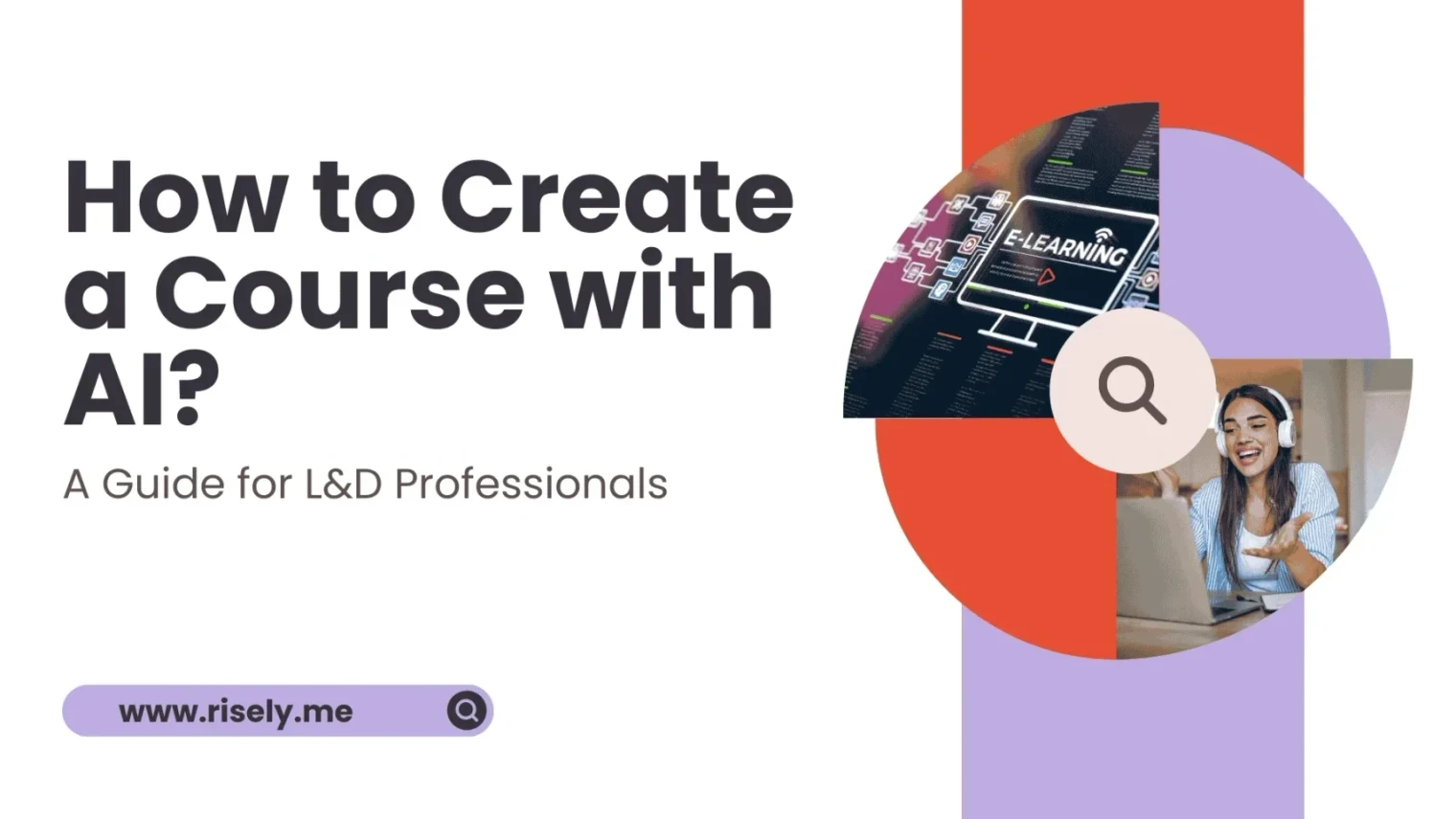How to Obtain Buy-In for Training from Stakeholders?
In the dynamic landscape of today’s corporate world, the pursuit of excellence is a perpetual journey. Organizations striving for growth and innovation recognize that investing in the development of their workforce is not just a luxury but a necessity. Enter Learning and Development (L&D) initiatives – the driving force behind nurturing talent, fostering skill development, and ultimately, propelling organizational success. However, despite the undeniable benefits of L&D programs, their success hinges on a critical factor: stakeholder buy-in. Obtaining buy-in from stakeholders – whether it’s senior leadership, HR professionals, managers, or employees – is akin to securing the cornerstone of a building; without it, the structure lacks stability and direction. In this guide, we delve into the intricacies of obtaining stakeholder buy-in for L&D initiatives, exploring strategies, challenges, and best practices to unlock the full potential of organizational learning and development.Why do you need buy-in for training from stakeholders?
Buying in from stakeholders refers to their agreement, support, and involvement in a particular initiative or decision. It means stakeholders with a vested interest or influence in the outcome demonstrate acceptance and endorsement of the proposed course of action. When stakeholders “buy-in,” they commit to the initiative, align their efforts, and contribute to its success. It is especially crucial for L&D initiatives as the support of stakeholders lends reinforcement to your initiatives and makes adoption easier across the board. Moreover, involving the relevant stakeholders can help in many areas – think of higher budget allocations and easier approvals – having the right people on your side can tilt the balance and make life way easier.What if buy-in for training is missing?
Now before jumping into all of this, why do we even need to care about stakeholder buy-in for L&D?- Buy-in from stakeholders ensures that your L&D initiatives get participation and engagement that is relevant to their success
- Stakeholder buy-in from the senior leadership is a great reinforcement and support mechanism
- Higher buy-in from stakeholders like managers and trainers ensures that people are motivated and give their best
- Employee buy-in for L&D programs is a key determinant of their success
What are the signs of missing stakeholder buy-in for training?
In case you are wondering where you stand, here’s a handy checklist for you below. If you see a lot of these symptoms around you, chances are that your stakeholders are not up for L&D plans as much as you need them to be. But fret not, we will delve into strategies to secure stakeholder buy-in for L&D in the next sections.- Minimal engagement or involvement in L&D discussions and decisions.
- Resistance or skepticism from stakeholders about the value or feasibility of L&D initiatives.
- Reluctance to allocate sufficient resources, including budget and personnel, for training.
- Differing or unclear expectations regarding L&D goals and outcomes.
- Inconsistent or ineffective communication about the L&D plan.
- Low participation or enthusiasm for training activities among employees.
- Lack of organizational culture that promotes learning and development.
Who are the stakeholders and what are their needs?
While identifying the primary stakeholders in an organizational L&D process, think along the route who will be interacting with you:
- Senior Leadership: Executives and top-level management are the first and foremost stakeholders who deal with us. They are crucial in setting the strategic direction for L&D initiatives, allocating resources, and demonstrating commitment to employee development.
- Human Resources (HR) Department: HR professionals are often responsible for designing, implementing, and managing L&D programs, and they are the second stakeholders we need to consider. They collaborate with other departments to identify training needs, select training methods, and evaluate the effectiveness of learning initiatives. Moreover, L&D initiatives work best in sync with HR.
- Employees: Employees are the primary beneficiaries of L&D initiatives as they participate in training programs to acquire new skills, knowledge, and competencies that enhance their performance and career development. Their interest is most interesting to us, so keep them in mind.
- Managers and Supervisors: Frontline managers and supervisors are vital stakeholders in L&D initiatives as they play a critical role in supporting employee learning, providing feedback, and reinforcing newly acquired skills in the workplace.
- The Training Providers: This stakeholder can take different forms depending on how your organization structures the L&D programs. This set primarily includes external trainers engaging with your people, internal mentors and coaches, subject matter experts, and training specialists devising the plans for your team.
Other Interesting Reads
What are the common challenges of teams seeking buy-in for training from stakeholders?
Getting buy-in from stakeholders is not a single issue. If we try to scratch the surface, we will see many facets to this typical L&D challenge. Let’s see how it unfolds:Your stakeholders don’t get what you are talking about
Ever gone ahead with an excellent presentation to the CXOs only to be met with “Huh?” It happens to the best of us, and often because we forget that their language and metrics differ from ours. While learning retention is great, they probably want more employee retention. A mismatch in stakeholders’ needs vs. what we convey is challenge number one to handle.Resource crunch
Buy-in from senior and executive level stakeholders gets stuck due to the unavailability of resources. Time, money, and effort are all scarce. It could be financial or operational, but resources will go first in the area that appears important in their view, and hence, you might be left with little.They don’t want to change
Some stakeholders may resist L&D training initiatives due to fear of change, reluctance to invest time or effort in learning new skills, or skepticism about the value of training itself. It happens most often when you share a new way of learning or fresh learning content with a set of people who are unfamiliar with it.They cannot see a point or result
If the objectives and expected outcomes of L&D training are not clearly defined or aligned with organizational goals, stakeholders will question the relevance or effectiveness of such initiatives. They will question the return on investment of L&D training if the results are not easily measurable or if there is a perceived disconnect between training outcomes and organizational performance.Your organizational culture is not ready
When do L&D initiatives create the best impact? Studies show it happens when culture and mid-level managers are willing to reinforce your actions at every single step. If they are not open to L&D plans or changes, you are unlikely to succeed even after having an on-paper buy-in from stakeholders like managers and employees.How to get buy-in for training from L&D stakeholders?

Showcase alignment and impact with their metrics
Instead of just talking about what you will do, show how it will work. When discussing a process, leverage ideas like a proof of concept to give an initial picture of what’s to come. Similarly, bring in ROI to demonstrate the impact you promise to create. At this step, remember to take the right set of metrics. Forget the vanity behaviors and rather get down to what matters. Talking about crucial areas with data to reinforce your point will help make a more persuasive case.If you are discarding an old system, tell why
Asking someone to change things up super quickly is obviously not going to go down well with them in many cases. Instead, if you explain why a change is needed and what that change will look like, the process will be much easier. Similarly, if you are introducing a new idea or training method, start by elaborating why that idea works and why your team should adopt it. Make a relevant case about the “why” of L&D before heading onto the “how.” By clearly articulating the shortcomings of the existing system and highlighting the benefits of the proposed changes, you can help stakeholders overcome resistance and embrace innovation.Manage the risks and costs associated with training
Stakeholders might be hesitant to invest in L&D initiatives due to concerns about risks and costs associated with training. To address these concerns, L&D teams should proactively identify and mitigate potential risks, such as disruptions to productivity, employee resistance, and budget overruns. Additionally, developing a comprehensive cost-benefit analysis that outlines the anticipated costs and potential returns of training can help stakeholders make informed decisions about resource allocation. In sum, be ready to resolve their concerns about what you are proposing.Leverage data and evidence: ROI, proof of concept
Empty talk goes nowhere. So let’s bring in something more to get things done. Data-driven decision-making is essential for gaining buy-in for L&D initiatives. By leveraging data and evidence, such as past performance metrics, benchmarking data, and case studies, you can provide stakeholders with concrete proof of the effectiveness and value of training programs. Demonstrating a clear ROI and presenting a proof of concept alleviates concerns and builds confidence in the potential outcomes of L&D initiatives. Read more: Using ROI of Training to Lead Successful L&D InterventionsFocus on communication
Effective communication is critical to securing buy-in for L&D initiatives. You should develop targeted communication strategies that highlight the benefits of training in a clear, compelling, and accessible manner. Tailoring messages to different stakeholder groups and using a variety of channels, such as presentations, workshops, newsletters, and intranet portals, can help ensure that key messages resonate with the intended audience.Start with a pilot program
To mitigate risks and build credibility, organizations can consider starting with a pilot or pilot program before scaling up L&D initiatives organization-wide. A pilot allows organizations to test the effectiveness of training programs, gather participant feedback, and make adjustments based on lessons learned. Additionally, planning for potential exits or course corrections in the event of unforeseen challenges can help stakeholders feel more comfortable investing in L&D initiatives.Wrapping Up
In conclusion, securing buy-in from stakeholders for your Learning and Development (L&D) initiatives is crucial for their success and effectiveness. It serves as a foundation for commitment, alignment, and collaboration across all levels of the organization. Without buy-in, your L&D initiatives may face numerous challenges and obstacles that hinder their implementation and impact.Check out Risely with a free 14-day trial.
Skill assessments, the AI coach Merlin, toolkits and much more for your organization.
Other Related Blogs
How to Create a Course with AI: A Guide for L&D Professionals
How to Create a Course with AI: A Guide for L&D Professionals According to a McKinsey survey(1), only 11% of business leaders believe their leadership development initiatives yield meaningful results.…
How to build a Learning and Development Action Plan ft Katie Greenwood
Does your company’s Learning and Development (L&D) strategy feel like more “guessing” than “winning”? You’re not the only one! In today’s fast-changing world, taking a random approach to L&D is…
Generative AI for Learning and Development: Getting Started
Generative AI for Learning and Development: Getting Started In 2024, organizations spent $401 billion globally on corporate training(1), yet 70% of employees report feeling unprepared for the future of work…
Future proofing a learning strategy for organizations with Inna Horvath
Future Proofing a Learning Strategy for Organizations with Inna Horvath With the advent of AI, everyone’s anticipating changes. L&D leaders in charge of building a learning strategy for organizations are…


